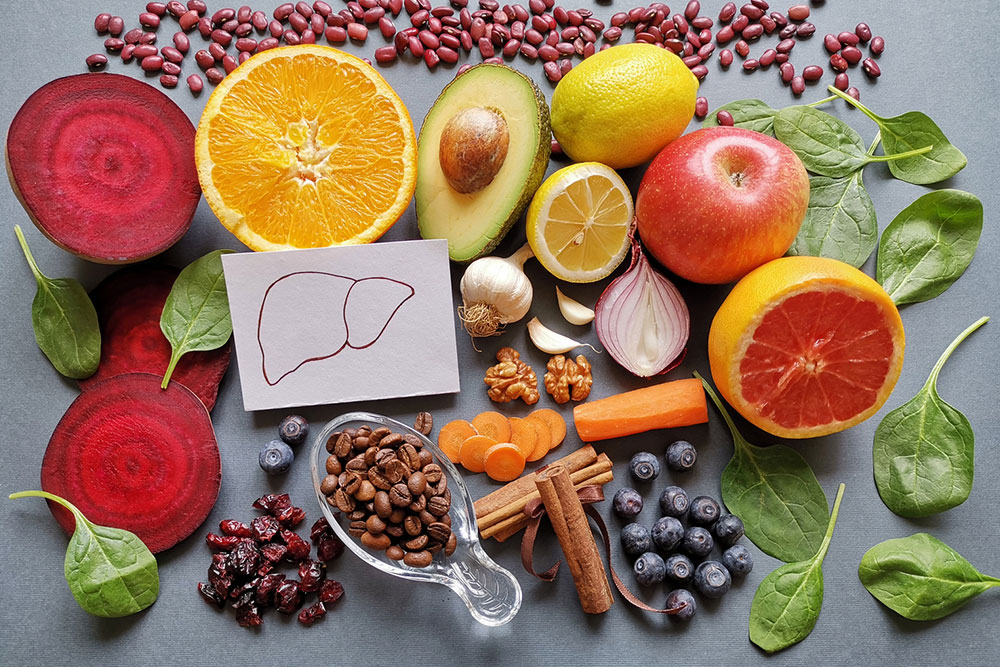
Foods to eat and avoid for hepatitis C
Hepatitis C is a viral infection that affects the liver. While nutrition alone cannot cure hepatitis C, it can play a vital role in managing the condition by supporting liver health, boosting the immune system, and reducing inflammation. To effectively manage this condition, it is important to include the best foods for hepatitis C in one’s meal plan. Below mentioned are some of the best foods to manage hepatitis C.
Foods for hepatitis C management
Lean proteins
Protein is crucial for liver health, but it’s important to choose lean sources. Options like skinless poultry, fish, tofu, and legumes are excellent sources of lean proteins. They provide amino acids necessary for tissue repair without overburdening the liver with excess fats.
Fruits and vegetables
Fruits and vegetables are among the best foods for hepatitis C as they ensure one gets the essential vitamins, minerals, and antioxidants – nutrients that help reduce inflammation and support the immune system. One must include citrus fruits, berries, leafy greens, and cruciferous vegetables like cauliflower and broccoli in daily meals.
Whole grains
Foods like brown rice, quinoa, whole wheat bread, and oats provide energy, complex carbohydrates, and fiber. They help maintain steady blood sugar levels and prevent spikes that can stress the liver.
Healthy fats
Nuts, seeds, avocados, and olive oil are among the best types of foods for hepatitis C for being sources of healthy fats. These fats support cell function and reduce inflammation without overloading the liver with saturated or trans fats.
Low sodium choices
High sodium intake can worsen hepatitis C symptoms and lead to fluid retention. One must choose low-sodium options, and season the food with herbs and spices.
Dairy alternatives
If one has suffered hepatitis C-related liver damage, one might have difficulty processing dairy. In this case, one must consider lactose-free or plant-based alternatives like almond or soy milk.
Caffeine
Coffee may have anti-inflammatory effects that can help reduce liver inflammation. Certain studies indicate that consuming three or more daily cups of coffee can benefit people with hepatitis C. The research shows that coffee drinkers are twice as likely to respond to treatment compared to those who do not drink coffee.
Turmeric
Curcumin, found in turmeric, is high in antioxidants and anti-inflammatory agents. It may help reduce liver inflammation and improve overall liver function. Turmeric can be added to curries and soups or taken as a supplement.
Remember that while a balanced nutritional regime is important, it’s only one aspect of managing hepatitis C. One must always follow the healthcare provider’s recommendations and treatment plan for the best outcomes.
Foods to avoid
Sugar intake
Excess sugar can contribute to fatty liver disease. One must limit the intake of sugary foods and beverages, including those with added sugars, to manage the condition.
Highly processed foods
Reduce consumption of highly processed foods, as they often contain unhealthy fats, excess sodium, and additives that can strain the liver.
Fried foods
Limit fried foods, which can be heavy on unhealthy fats.
Tips for a healthy hepatitis C nutritional regime
Here are some tips to keep in mind while following a hepatitis C meal plan:
Portion control
One must practice portion control to avoid overeating, which can lead to increased liver stress.
Supplements
Consult a healthcare provider about any supplements or vitamins one may need. Sometimes, individuals with hepatitis C may have deficiencies that require supplementation.
Hydration
Staying hydrated is essential, but it is also important to be mindful of sugary drinks. Water is the best choice, but one can also include herbal teas like green tea or infused water for variety.
Consult a nutritionist
Consider working with a registered nutritionist specializing in liver health or hepatitis C. They can help one with a personalized meal plan that suits one’s specific needs and helps them manage their condition effectively.




